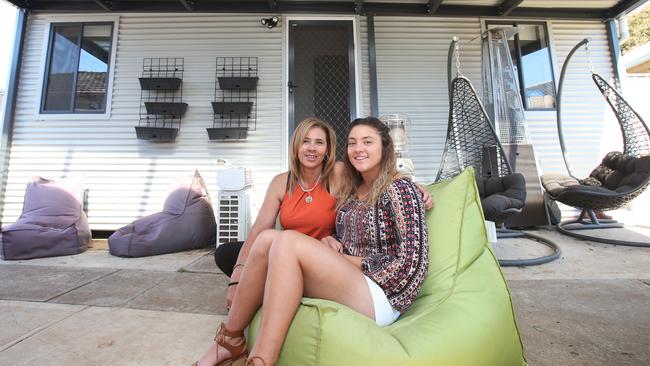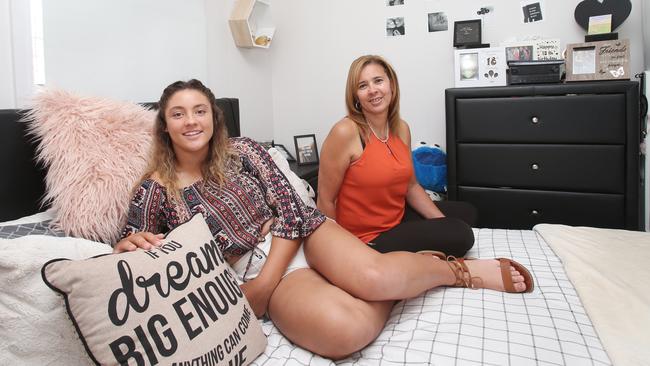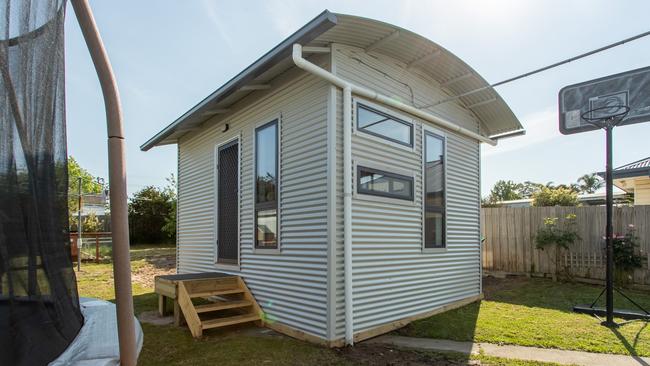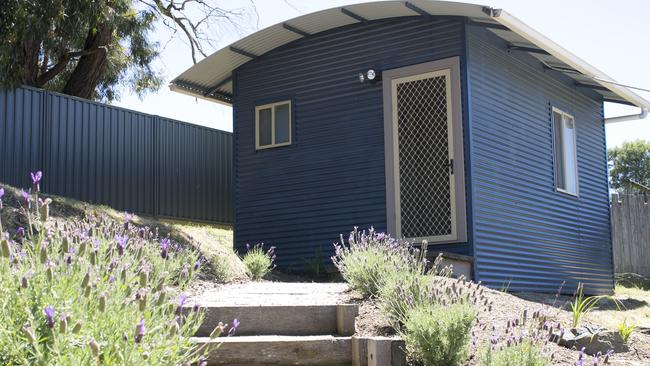Kids Under Cover Studio Program offers relocatable container homes to save teens from private rental and potential homelessness
An innovative scheme helping parents save their kids from the rental market squeeze – and potential homelessness – is coming to Adelaide.
SA News
Don't miss out on the headlines from SA News. Followed categories will be added to My News.
Taxpayer-funded, relocatable granny-flat studio homes will be used to save young South Australians from the private rental market crisis.
The scheme has been chosen from many that tendered for the first of $20m in State Government funding designed to save 12-25-year-olds from homelessness caused by crippling rent pressure.
Parents will be able to apply for the relocatable units on their property when their children are ready to leave home but can’t afford rent.
Housing Minister Michelle Lensink said the Kids Under Cover Studio Program would be given $2.3m to locate 51 studios in SA, to be reused when the children do leave home.
The second winning tender of the funding is for UnitingCare Wesley to provide $2.1m private rental support for private renter families.

“Kids Under Cover has identified a strong link between overcrowded households and young people prematurely leaving home and becoming vulnerable to homelessness – and this project will help South Australian youth stay safely connected with their families,” Ms Lensink said.
“To address overcrowding at home, Kids Under Cover locate studios in the backyards of homes to assist families and carers in need of more room to accommodate young people aged 12-25.
“The relocatable studios are expected to be on the ground in South Australia by late 2021.”
The Advertiser this month revealed up to 20 renters are applying for every home to come on to the Adelaide market, with up to 200 attending open inspections for rentals.
Successive state governments have battled to revive SA’s broken public housing system for decades.
The Housing Trust was set up after World War II for low-income working families, but with more than 20,000 people permanently on waiting lists, new tenants are most often only those needing crisis accommodation.

Kids Under Cover CEO Jo Swift said the studios had either one or two bedrooms, each with a desk, and a bathroom.
“This gives young people their own secure and stable space to thrive, while maintaining the connection with their family,’’ she said.
“This reduces the risk of the young person being forced to leave home prematurely and into homelessness.
“It’s a grave misconception young people become homeless by choice, and the reality is vastly different.
“For the young people we support, their lives have become emotionally and often, physically unbearable.


“Their home life may be burdened by the disadvantages of poverty, overcrowding, unemployment, trauma, health complications, disability and mental illness.
“This causes some young people to feel there is no other option but to leave. They are not ready, have nowhere to go and may become isolated from mainstream society.”
Ms Lensink said the current public housing system did not serve the purpose of stopping homelessness.
“Currently, we have a homelessness system that is outdated, expensive and does not achieve real outcomes for South Australians who are homeless or at risk of becoming homeless and people using the system have told us it’s not working for them,’’ she said.
“We’re spending millions of dollars every year on crisis accommodation – and this does not provide long-term solutions for people experiencing homelessness and that’s why we’re currently reforming the system.”




